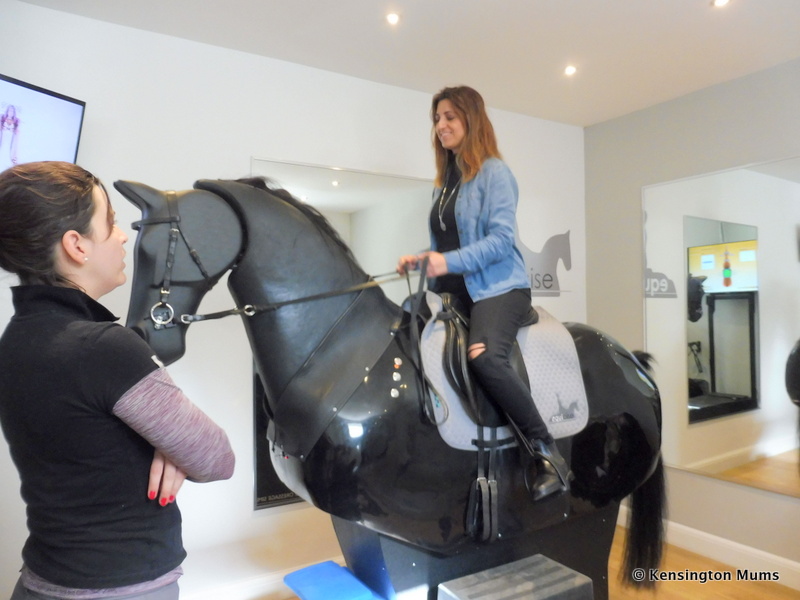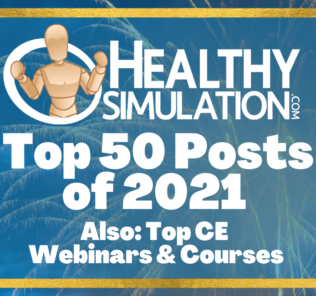Emerging Simulation Technologies in Other Industries: Horse Riding Simulators
Taking a quick break from medical simulation today, we are taking a look at some brand new simulators in other industries starting with horse riding simulators like the one from Lappeenranta University of Technology. Advances in Simulation technologies in other industries beyond healthcare will surely further support the development of simulation in healthcare. Already ubiquitous in military, space, and flight, simulation remains only an emerging trend in healthcare — and so learning from other fledging simulation technologies in other verticals can better help us expand healthcare simulation faster!
In the video below you can see Real-Time Monitoring of a Horseback Rider on a Horse Simulator Utilizing: EEG, Motion Capture Vest, Motion Traction Camera System. This video is from the Laboratory of Intelligent Machines of Lappeenranta University of Technology in a Collaboration with Health Care and Social Services group of Saimaa University of Applied Sciences. Focusing on just one of many horse simulators available around the world, In “Real-time monitoring of the Human Body During Horseback Riding Utilizing a Horse Simulator“, Alina Byzova covers how motion capturing measurements can help to increase the speed and accuracy of learning how to ride a horse.
Abstract: This article describes the development process of a horseback riding simulator capable of generating a close to natural riding sensation. The development process started with 6-DOF motion measurement of the dynamics of the rider’s saddle during riding. Six-dimensional measurements during riding are required to fully understand the character of the saddle dynamics during different gaits. The measured quantities, i.e. translation accelerations and angular velocities, were transformed and filtered to form position references for a hydraulic Gough–Stewart platform. The presented novel motion measurement method is easy to use and makes it possible to measure gaits of several individual horses in a short time. It also provides a straightforward approach to produce motion data for the motion platform. In the second phase of the study, an artificial horse body made of glass fiber was mounted on the motion platform. The developed simulator realizes all three basic gaits walk, trot, and gallop. The rider is able to control the behavior of the simulator via sensors and an interactive interface. The control aids sensed by the interface are reins tension, calf pressure, and stirrup angle. A novel intelligent algorithm mimicking the real rider–horse interaction to vary the gaits and their frequencies was developed and tested.
Sponsored Content:
The math behind such riding simulators is extremely complex as horses can move through such dynamic range of motions and speeds:

Conclusions: Horseback riding as a form of therapy for a range of human disabilities has been spread worldwide recently. Benefits of horseback riding improve posture, balance, gross motor function, energy expenditure, and health state. Horseback riding has been found to be an effective form of therapy in other musculoskeletal disorders. In this work, real-time monitoring of human body during horseback riding utilizing a horse simulator was conducted. Three different experiments were made in order to monitor the behavior of the body and brain for professional and non-professional horseback riders. The first and second experiments are based on inertial and optical motion capture system and represent body behavior, respectively. The third experiment based on electroencephalography for monitoring brain behavior. Strong bioenergetic impulses are projected onto the human body from the powerful muscles of the horse.
Sponsored Content:
Also, during the session, the patient’s muscles warm up and become plastic – the body temperature of the horse is one and a half degrees higher than inhuman. When moving, the horse transmits to the patient from 90 to 110 multidirectional motor impulses per minute: up-down along the length of the body axis (against gravity), forward backward along the frontal-transverse axis of the body, from side to side around the sagittal-transverse axis of the body, diagonal movements around the functional point of the body centre. The movements of the horse are transferred to the middle position of the seated person, his hip joint and lumbar-vertebral column, imitating and stimulating the movements that a healthy person makes when walking. And such training of the trunk cannot be achieved by any other motor methods of treatment. In this study, it was found that the professional rider’s results exceeded the results of the non-professional rider by many times. Fixed pelvis and well-adjusted saddle allow the rider to avoid injuries and feel more conveniently, productively, and accurately. The rider should keep the pelvis in a neutral position without any rotation to avoid lumbar lordosis or anteriorly rotated pelvis.
It is very essential to the rider to pay attention to the kinematic, especially, the position of the pelvis during riding and horse. Scientifically proven, that professional riders keep their pelvis closer to the centre of the saddle and further forward then non-professional riders, which tilt pelvis to the left or right and more backward. The wrong position in the saddle leads to the asymmetry in hip external rotation and back. All the movements that a rider receives from the horse are absorbed mostly by the lower region of the body such as the pelvis and hip joints. If the rider loss any mobility at the pelvis region, then all force from the horse’s movements will transfer to the lumbo-pelvic region. Incorrect absorption of movements can cause injuries in the upper part of the body, especially back injuries as it is the most vulnerable area. The rider should keep the pelvis in a neutral position without any rotation to avoid lumbar lordosis or anteriorly rotated pelvis. This study, additionally, investigates electroencephalography of the brain activity while riding a horseback simulator. Low and high frequencies affect to the brain activity in a different range. Low frequency corresponds to relaxation and sleeping time, while high frequency is responsible for awaking time and activities such as sport, mathematics, concentration. Thus, every brain lobe represents different brain activity. While horseback riding mostly frontal lobe is active, that refers to concentration, body movements and intelligence that are needed during riding. Also, temporal and parietal lobes are highlighted that relates to sensor-motor cortex and moving.
In another study linked below, “82.4% of respondents answered that they were satisfied with the simulator, and 92.1% said that using the simulator had an exercise effect. Thus, the developed simulator is considered to be sufficient for riding lessons and therapeutic use.”
There are numerous other horse riding simulators (like this one available at Wimbledon Village Stables or this one from the Korea Evaluation Institute of Industrial Technology) the available from riding to jumping, demonstrating advances in robotics, simulation, horse riding, adult education, and audio visual technologies. What do you think we can learn from simulation in the equestrian industry? Do you know of new simulation technologies from other industries we should know about? Drop us an email and let us know!
Subscribe to HealthySim for More News About New Simulation Technologies!
Lance Baily, BA, EMT-B, is the Founder & CEO of HealthySimulation.com, which he started while serving as the Director of the Nevada System of Higher Education’s Clinical Simulation Center of Las Vegas back in 2010. Lance is also the Founder and acting Advisor to the Board of SimGHOSTS.org, the world’s only non-profit organization dedicated to supporting professionals operating healthcare simulation technologies. His co-edited Book: “Comprehensive Healthcare Simulation: Operations, Technology, and Innovative Practice” is cited as a key source for professional certification in the industry. Lance’s background also includes serving as a Simulation Technology Specialist for the LA Community College District, EMS fire fighting, Hollywood movie production, rescue diving, and global travel. He and his wife Abigail Baily, PhD live in Las Vegas, Nevada with their two amazing daughters.
Sponsored Content:




















